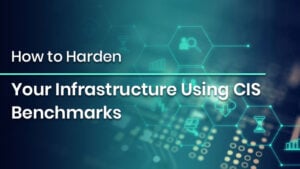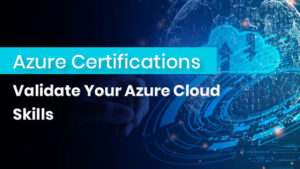
How to Harden Your Infrastructure Using CIS Benchmarks
How to Harden Your Infrastructure Using CIS Benchmarks Introduction As more organizations go faster with their digital transformation, the security and resilience of IT infrastructure
Limited-Time Offer! Get an exclusive 40% OFF on IPSpecialist Premium Monthly & Annual Plans. Use Promo Code: UPSKILLNOW at checkout.

How to Harden Your Infrastructure Using CIS Benchmarks Introduction As more organizations go faster with their digital transformation, the security and resilience of IT infrastructure

Azure Certifications – Validate Your Azure Cloud Skills Introduction Cloud computing has transformed the business landscape, providing scalability, flexibility, and affordability in a way

Top Cyber Security Trends: What Every Organization Must Know Introduction In an era marked by digital transformation, remote workforces, and rapidly evolving threat landscapes,
Table of Contents
Small and medium-sized enterprises may find that Disaster Recovery as a Service (DRaaS) is the best option because it is far less expensive to outsource disaster recovery than to manage it internally.
DRaaS is when a third party hosts recovery efforts. To enable failover in the event of a natural disaster, power loss, or other occurrences that compromise business continuity, the provider must host real or virtual servers and replicate them.
The fundamental tenet of DRaaS is that the remote vendor, who often has a globally distributed architecture, is less likely to be impacted than the client in an actual disaster. This enables the vendor to assist the client in the worst-case disaster recovery scenario, in which a crisis forces the organization’s physical premises or computing resources to be completely shut down. This article will cover the detailed knowledge of Disaster Recovery as a Service (DRaaS)
Check out our Courses now if you want to start your career in Cloud Computing, Cybersecurity, and Networking.
Disaster Recovery as a Service provider primarily employs the managed, assisted, and self-service models.
In the managed DRaaS approach, external parties are responsible for disaster recovery. To keep all infrastructure, application, and service updates current, choosing this option necessitates strong collaboration between enterprises and DRaaS providers. This is the best choice if the user lacks the knowledge and time necessary to run the catastrophe recovery.
Supported DRaaS might be a better option if users wish to be in charge of some components of the disaster recovery strategy. In this approach, the customer is in charge of implementing some or all of the disaster recovery plans while the service provider offers services and knowledge that can assist the process run more smoothly.
A self-service DRaaS is the least expensive alternative; under this model, customers are in charge of disaster recovery planning, testing, and administration. The vendor offers backup management software in addition to hosting backups and virtual machines in distant locations. The main cloud service providers, including Amazon, Microsoft Azure, and Google Cloud, offer this architecture.
To ensure that operations can be seamlessly transferred to the vendor’s remote datacenter and quickly resumed when local resources are restored, rigorous planning and testing are necessary when utilizing this architecture. This option is appropriate for businesses with internal disaster recovery and cloud computing knowledge.
When a crisis strikes, the DRaaS provider’s infrastructure functions as the client’s disaster recovery site. The provider’s service typically consists of hardware or software replicating data and virtual machines to one of its private or public clouds.
By managing the failover process while using managed DRaaS, the service provider ensures that users are transferred from the primary environment to the remote environment. The organization will be required to take on some of these duties in other types of DRaaS.
Small firms lacking internal disaster recovery expertise will find hosted DRaaS extremely helpful. Another advantage for smaller firms is outsourcing infrastructure since it saves money on the expensive equipment to run a disaster recovery site.
When choosing a DRaaS provider for the business, one should consider the following factors:
Most DRaaS services available today are built using public cloud providers, which have practically infinite capacity. At the same time, even public clouds experience outages, so it is critical to know what would happen if the DRaaS vendor could not offer services in the event of a disaster.
Another probable scenario is that the DRaaS provider will fulfill its obligations but fall short of its SLAs.
Consult with the DRaaS supplier to comprehend how users will access internal applications during a crisis and how VPN will operate, whether it will be managed by the provider or rerouted.
If users utilize Virtual Desktop Infrastructure (VDI), consider how a failover event would affect users’ access and decide who would manage the VDI during a disaster.
Inquire about potential DRaaS providers and their standard operating procedures and crisis response support.
In BaaS, just the data is backed up, leaving user in charge of the infrastructure, whereas in DRaaS, both the infrastructure and data are backed up, and the MSP deploys the servers.
BaaS typically has lower upfront costs than DRaaS because the MSP simply has to maintain the storage. The cost of not creating a proper disaster recovery plan, however, could be far higher in the long run. Since the MSP is also maintaining the infrastructure with DRaaS, the upfront cost will probably be higher, but users are shielded from potentially greater losses brought on by downtime in the absence of a DRaaS solution.
While data recovery is possible with BaaS, it can take substantially longer to get the infrastructure back up and running. The Recovery Point Objective (RPO) and Recovery Time Objective (RTO) will be slower as a result, measured in hours or even days. One can recover considerably more quickly with a DRaaS solution because the RPO and RTO are measured in seconds and minutes, respectively.
Downtime can cost a company money. In reality, a lot of small businesses cannot stand being offline for an extended period. Downtime for businesses is drastically decreased.
It is significantly less expensive to outsource disaster recovery to an MSP than to manage it internally. It does away with the necessity for more technology spending and IT staff.
For its services, its providers demand a monthly fee. This makes creating a budget simple.
Traditional methods for disaster recovery and business continuity have concentrated on finding solutions and reducing the costs of reconstructing the physical infrastructure needed to offer services and goods.
The information medium, however, has become a new frontier where expenses and potential business service impacts in the event of disasters must also be considered due to the information age and the digitalization of data.
© 2025 All rights reserved | Privacy Policy | Terms and Conditions | Sitemap | Cookie Policy




